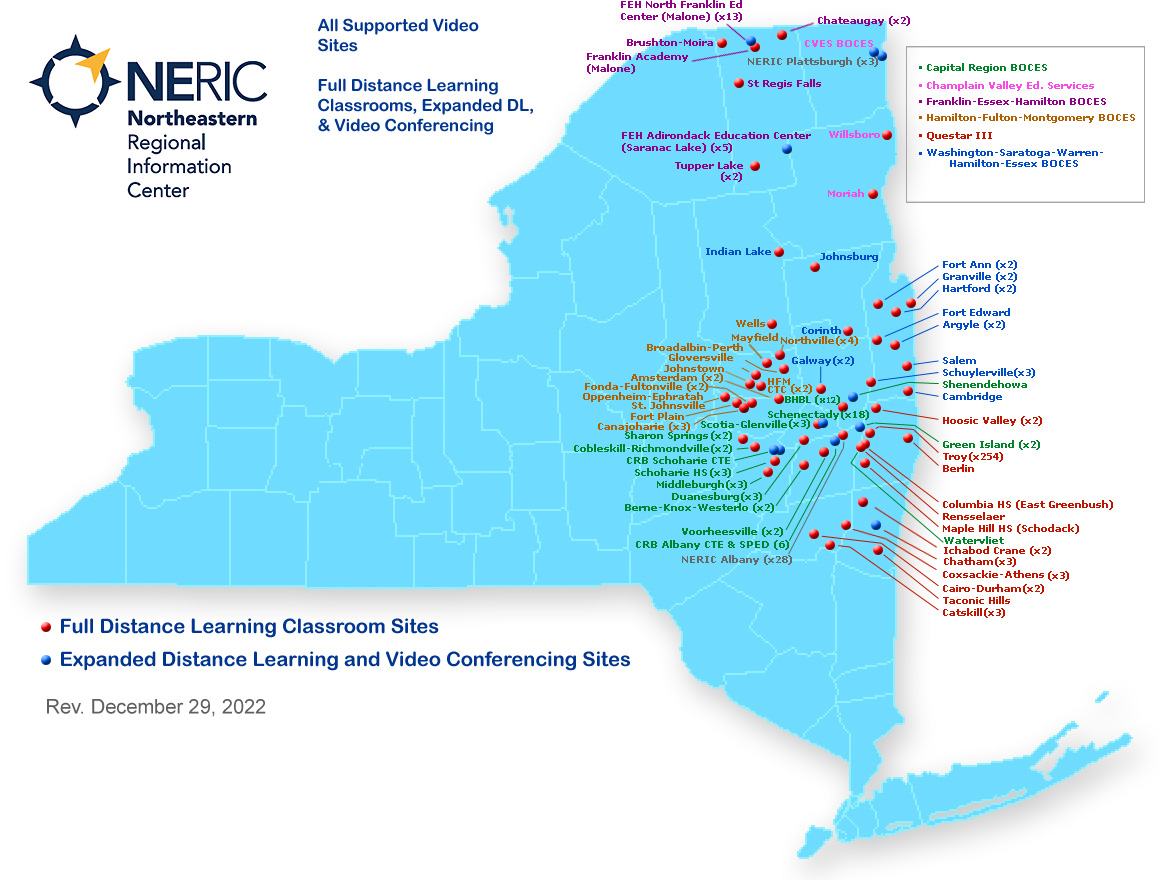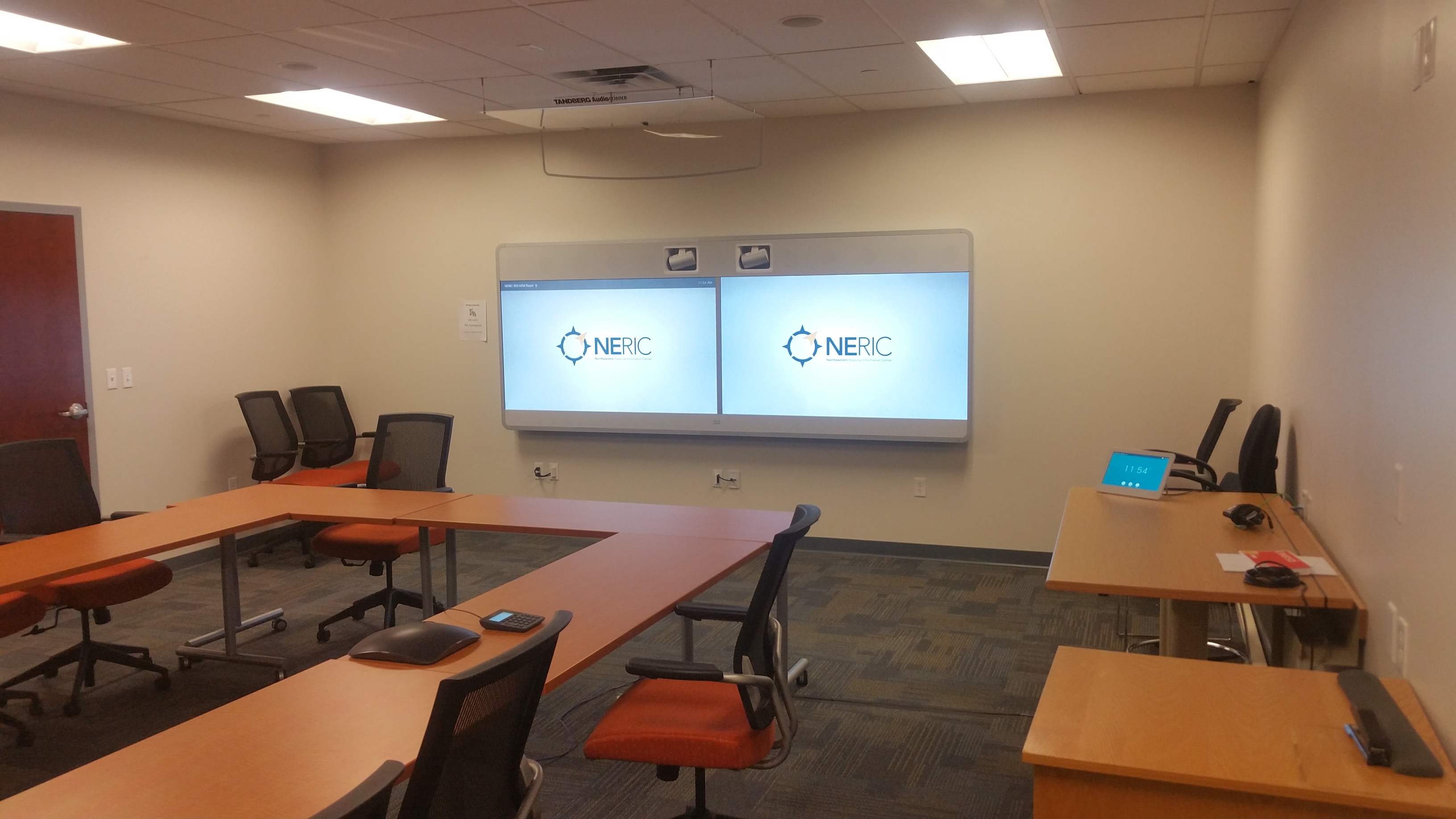


|
Distance Learning News
|
| About Distance Learning Course Planning 2020-2021 Statewide DL Course Database Staff Development Programs Adult/Continuing Education Videoconferencing & Virtual Field Trips |
| Videoconferencing
and Virtual Field Trips The NERIC Distance Learning and Video Conferencing Program provides the opportunity for districts to participate in video conferences and virtual field trips offered at he district level and through third party providers. |
|||
| Connect Your Students and Your Schools to a World of Educational Opportunity! | |||
|
|||
|
|
|||
| Technical Overview of Videoconferencing | |||
|
|||
|
|
|||
| Scheduling Conferences | |||
Virtual Field Trips A virtual field trip typically involves a classroom in one location and a content provider, such as a zoo or a museum. Classroon-To-Classroom conferences also use these same proceedures. You can find step-by-step directions on how to plan and schedule a virtual field trip here. Mulit-Point Video Conference Any administrative or instructional videoconference that involves three or more endpoints is considered a Multi-Point Videoconference. When scheduling a Videoconference, you must first determine the type of conference. This is usually based on the number of sites participating. In general, there are two (2) types of videoconferences, (1) Virtual Field Trip or Point-to-Point (which includes classroom-to-classroom conferences) (2) Multi-Point - Three or more sites. In most cases these conferences will require a multi-point videoconferencing bridge. For information and/or for a reservation form please click here. |
|||
|
Current Video Conference Sites NERIC currently supports over 65 districts and more than 400 video conference units 
|
|||
|
Choosing a Content Provider There are hundreds of virtual field trip/videoconferencing content providers. BOCES Videoconferencing Services maintains a listing of content providers with which our regional videoconferencing schools have connected. Evaluations submitted by our schools in northeastern New York State provide the basis for our recommendations. We highly recommend that you also see the VC Content Providers - Third Party Databases below. These are very useful in searching through the thousands of available virtual field trips and videoconferences.
|
